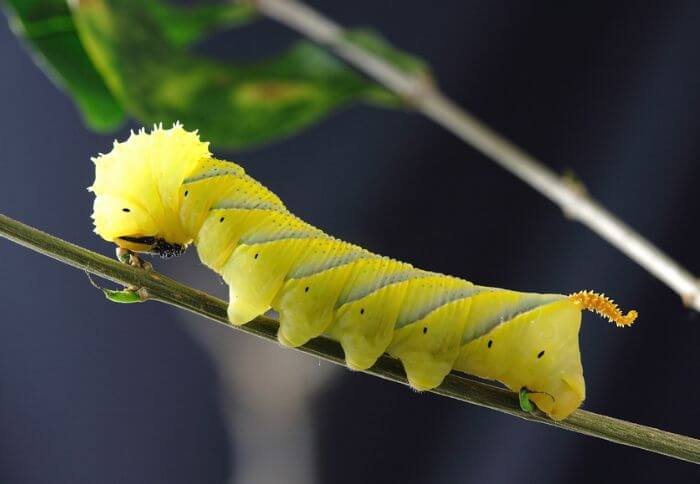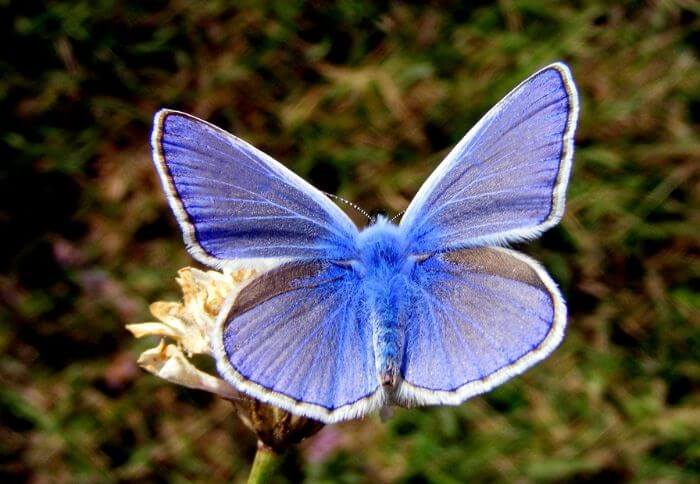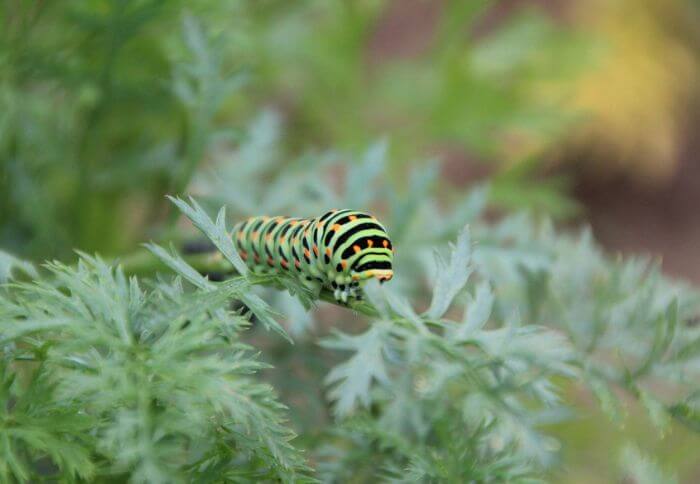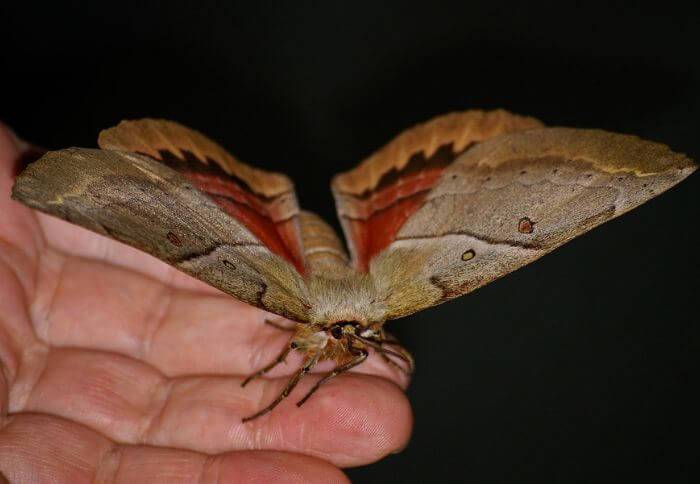3 Big Green Moths (with Images)
The world of moths is a fascinating and diverse one, with countless species inhabiting every corner of the globe.
Among these delicate creatures, the green moths stand out as some of the most captivating and enigmatic.
With their striking hues of emerald, lime, and jade, these moths have captured the imagination of nature enthusiasts for centuries. In this article, we’ll explore the various types, unique characteristics, and ecological significance.
Big Green Moths
1. Luna Moth
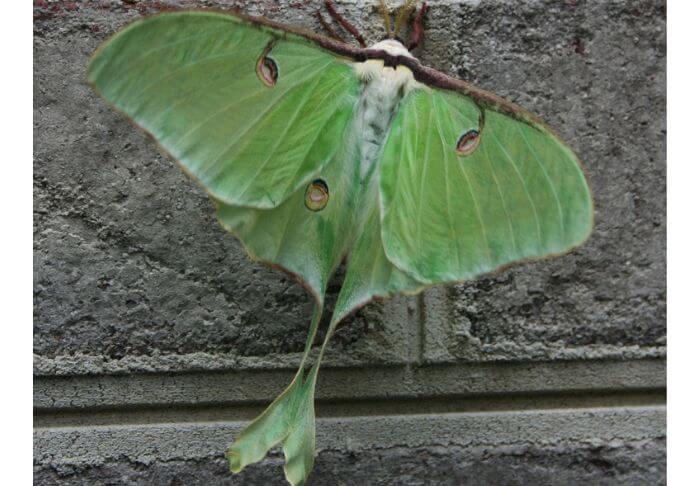
The luna moth, also known as Actias luna, is a mesmerizing creature with its striking lime green wings and long, sweeping tails.
This graceful insect is one of the largest moths in North America, boasting a wingspan of up to 4.5 inches. Its delicate appearance is characterized by prominent eyespots on each wing that serve as a defense mechanism against predators.
The luna moth’s distinctive markings convey an otherworldly quality, making it one of the most captivating insects in the natural world.
One of the most fascinating features of the luna moth is its short lifespan as an adult. After emerging from its cocoon, this majestic creature only lives for about 7-10 days—just enough time to fulfill its primary purpose: reproduction.
During this fleeting period, the luna moth’s sole mission is to find a mate and lay eggs before gracefully surrendering to nature’s cycle.
Despite their ephemeral existence, these enchanting creatures continue to captivate with their ethereal beauty and brief but impactful presence in the ecosystem.
The luna moth’s unique biology also sets it apart from other species. Unlike many nocturnal moths, they are primarily active during nighttime hours when they seek out mates using their keen sense of smell—a behavior that adds another layer of mystery and allure to these enigmatic creatures.
Luna moth Distribution and Habitat
Its distribution ranges from the eastern United States to southern Canada and westward to the Great Plains region.
This wide distribution is due in part to the moth’s adaptability to different habitats, including deciduous forests and woodlands where its host plants such as birch, sweet gum, and hickory trees are commonly found.
Despite its broad range, these large green moths are not often encountered by humans due to their relatively short adult lifespan of only about one week.
2. Pandora Sphinx (Eumorpha pandorus)
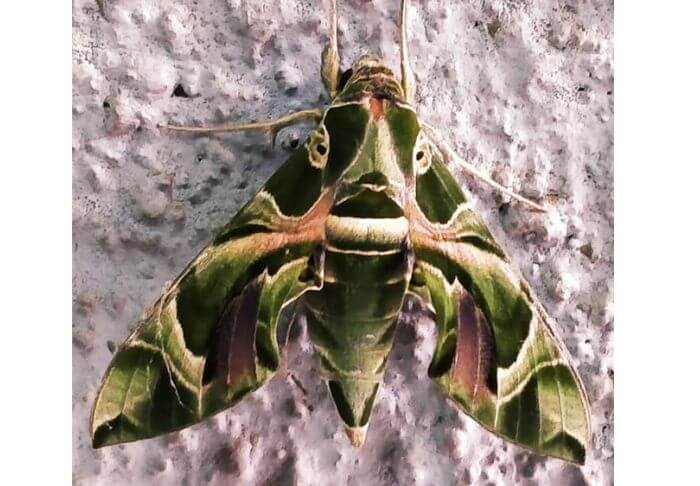
source: the.mental.work
Eumorpha pandorus, common name Pandorus Sphinx Moth, is a remarkable creature with striking physical characteristics.
One of its most noticeable features is its large wingspan, measuring up to 4-5 inches. The wings are primarily olive green with intricate patterns of pink and white, creating a mesmerizing and ethereal appearance.
When in flight, the Pandorus Sphinx Moth exhibits graceful movements that capture the eye and evoke a sense of wonder.
In addition to its impressive size and coloration, this moth also possesses a robust body adorned with subtle yet beautiful details.
Its slender abdomen is marked with elegant striping in shades of green and white, while its legs display delicate tufts of fur that add to its overall allure.
Overall, Eumorpha pandorus stands out as an enchanting example of nature’s artistry, showcasing an exquisite blend of colors and patterns that make it a captivating sight in the natural world.
Geographic Range
Found primarily in North and Central America, from Canada to Mexico, these large green moths are known for their striking beauty and remarkable adaptability.
While they are most commonly found in forested areas, they have also been observed in urban environments, demonstrating their ability to thrive in diverse habitats.
eumorpha pandorus Notable Behaviors
The Pandorus Sphinx Moth exhibits several notable behaviors that capture the imagination of nature enthusiasts. One fascinating behavior is their ability to hover near flowers while feeding on nectar, demonstrating remarkable agility and precision in flight.
Another intriguing trait is their role in pollination, as they play a vital part in transferring pollen from one flower to another during their feeding activities.
Furthermore, these moths are known for their exceptional camouflage skills, blending seamlessly with their surroundings to evade predators and ensure their survival.
In addition to these captivating behaviors, Eumorpha pandorus has also been observed engaging in intricate courtship rituals that showcase their sophisticated communication methods.
3. Gaudy Sphinx
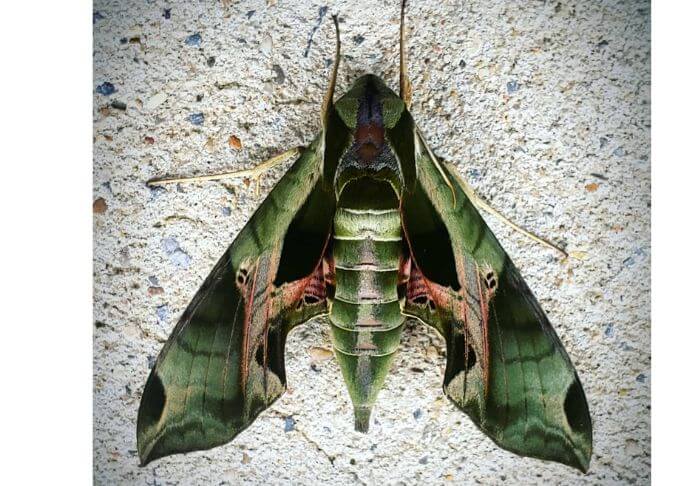
source: kristyl.andrews
The gaudy sphinx, known for its striking coloration and impressive size, is commonly found in a variety of habitats across North America.
However, these magnificent creatures display a preference for open woodlands, meadows, and prairies where they can easily locate their preferred nectar sources.
Their habitat preferences also extend to areas with an abundance of host plants such as evening primrose and willow weed where they lay their eggs. Interestingly, the gaudy sphinx has been observed in both rural and urban settings, indicating their adaptability to human-altered environments.
Moreover, research suggests that the gaudy sphinx thrives in warm climates with moderate humidity levels.
This preference may explain why sightings of these stunning moths are more common during the summer months when temperatures rise and floral resources are abundant.
It’s worth noting that gaudy sphinx caterpillars rely on specific host plants for sustenance, which further influences their habitat selection.
Noteworthy Facts
One of the most noteworthy facts about the gaudy sphinx is its unique ability to blend in with its surroundings when at rest.
The combination of its green hues and subtle markings allows it to camouflage effectively among foliage, making it a challenge to spot despite its large size.
Another interesting aspect of this large green moth is its role in pollination. Like other hawk moths, the gaudy sphinx plays a crucial role in pollinating various flowering plants while feeding on their nectar.
This mutual relationship between the moth and plants highlights the intricate balance within ecosystems, where even seemingly extravagant creatures contribute to vital ecological processes.
Related Read: Check out this interesting caterpillar poems
4. Male Pūriri Moth
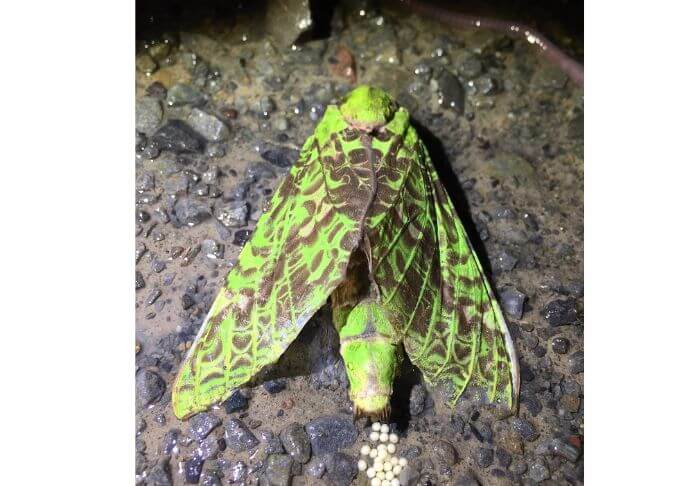
source: hikinghoundsandharts
The male puriri moth is a magnificent creature with a wingspan of up to 4 inches, making it one of the largest moths in New Zealand.
Its vibrant green coloration and intricate patterns on its wings make it a striking sight in the native forest habitats where it is found.
The male puriri moth also possesses impressively feathery antennae that aid in detecting pheromones released by female moths, enabling them to locate potential mates over long distances.
Additionally, the male puriri moth exhibits superb camouflage when at rest, blending seamlessly into the foliage with its green coloring.
This adaptation helps them evade predators and increases their chances of survival in the wild.
The mating rituals of these moths are equally fascinating, involving intricate dances and displays that showcase their elaborate beauty as they seek out potential partners amidst the lush undergrowth of their natural environment.
Puriri moth range
Native to New Zealand, these moths can be found in the forests of the North Island, where the puriri tree, their namesake, grows abundantly. What makes the Puriri moth’s range truly fascinating is its connection to the unique ecology of New Zealand.
As an integral part of the forest ecosystem, these moths play a crucial role in pollination and are a symbol of the country’s natural heritage.
In addition to their ecological significance, the range of Puriri moths also reflects their adaptability to diverse environments within New Zealand’s North Island.
While they are commonly found in native forests, these stunning creatures have also been seen in urban areas with suitable vegetation. Their ability to thrive in various habitats showcases their resilience and adds to their allure as iconic insects of Aotearoa.
FAQs
Life Cycle of Big Green Moths
The life cycle of big green moths is a fascinating journey that begins with the female moth laying her eggs on the underside of leaves.
These eggs then hatch into tiny caterpillars, which voraciously feed on the surrounding foliage. As they grow, these caterpillars molt several times before finally pupating into large, vibrant green moths.
One interesting aspect of their life cycle is their behavior during the pupal stage. The moths often seek out secluded areas to undergo metamorphosis, such as hidden within leaf litter or under loose bark. This instinctual behavior showcases their adaptability and survival skills in an ever-changing environment.
As adults, these magnificent creatures emerge from their cocoons with brilliant wings that enable them to blend seamlessly into verdant surroundings.
Their short but magical lifespan is spent seeking mates and completing the circle of life by laying new eggs for the next generation to continue this awe-inspiring life cycle.
Importance of large green moths in pollination
Big green moths play a crucial role in pollination, often overshadowed by their more colorful counterparts.
These nocturnal insects are essential pollinators for many plant species, especially those that bloom at night.
Their large wingspan and unique feeding behaviors enable them to transfer pollen from one flower to another, contributing to the reproductive success of numerous plant species.
Large green moths are also attracted to specific scents and colors, making them highly specialized pollinators for certain flowers that rely on nocturnal visitors.
Furthermore, huge green moths add diversity to the ecosystem as they complement the work of other pollinators such as bees and butterflies.
Their ability to access nectar from deep-throated flowers that other diurnal insects may overlook makes them indispensable in maintaining a balanced and resilient ecosystem.
Role in Food Chains
As primary consumers, giant green moths serve as prey for numerous predators ranging from birds to small mammals, thus forming an essential link in the food chain.
Their presence also impacts plant populations as they act as a pollinator for various flowering species, contributing to their reproduction and overall biodiversity.
What do big green moths eat?
Surprisingly, big green moths primarily feed on nectar from flowers, using their long proboscis to sip the sweet liquid. In addition to nectar, some species also consume tree sap and fruit juices, showcasing their diverse dietary preferences.
What is a giant green moth with tail?
The giant green moth with a tail is the Luna moth. With its vibrant emerald wingspan and distinctive long, trailing tails, this majestic insect is truly a sight to behold.
In folklore and mythology, the Luna moth represents rebirth and renewal, adding an enchanting aura to its already striking appearance. Its large size and unique coloring make it a symbol of mystery and wonder in the natural world.
Large green moth in Florida?
The Luna Moth captures the imagination with its ethereal beauty and mystical presence in the Florida night.
With a wingspan of up to 4.5 inches, this majestic creature is a sight to behold as it flutters gracefully through the warm evening air.
Its vibrant green color exudes a sense of natural wonder, making it a stunning addition to Florida’s diverse ecosystem.
Learn more about common big moths in Florida
| Name | Scientific Name | Wingspan |
| Luna Moth | Actias luna | 4.5 inches |
| Pandora Sphinx | Eumorpha pandorus | 4.6 inches |
| Gaudy Sphinx | Eumorpha labruscae | 4.5 inches |
| Male Pūriri Moth | Aenetus virescens | 5.9 inches |
source:
Passionate animal photographer with an unwavering love for capturing the essence and beauty of our furry friends.
With over five years of experience in the field, I have developed a unique ability to connect with animals on a deeper level, allowing me to create stunning and captivating images that truly reflect their personality.
Let’s collaborate to capture unforgettable moments that celebrate the unique bond between humans and animals!

